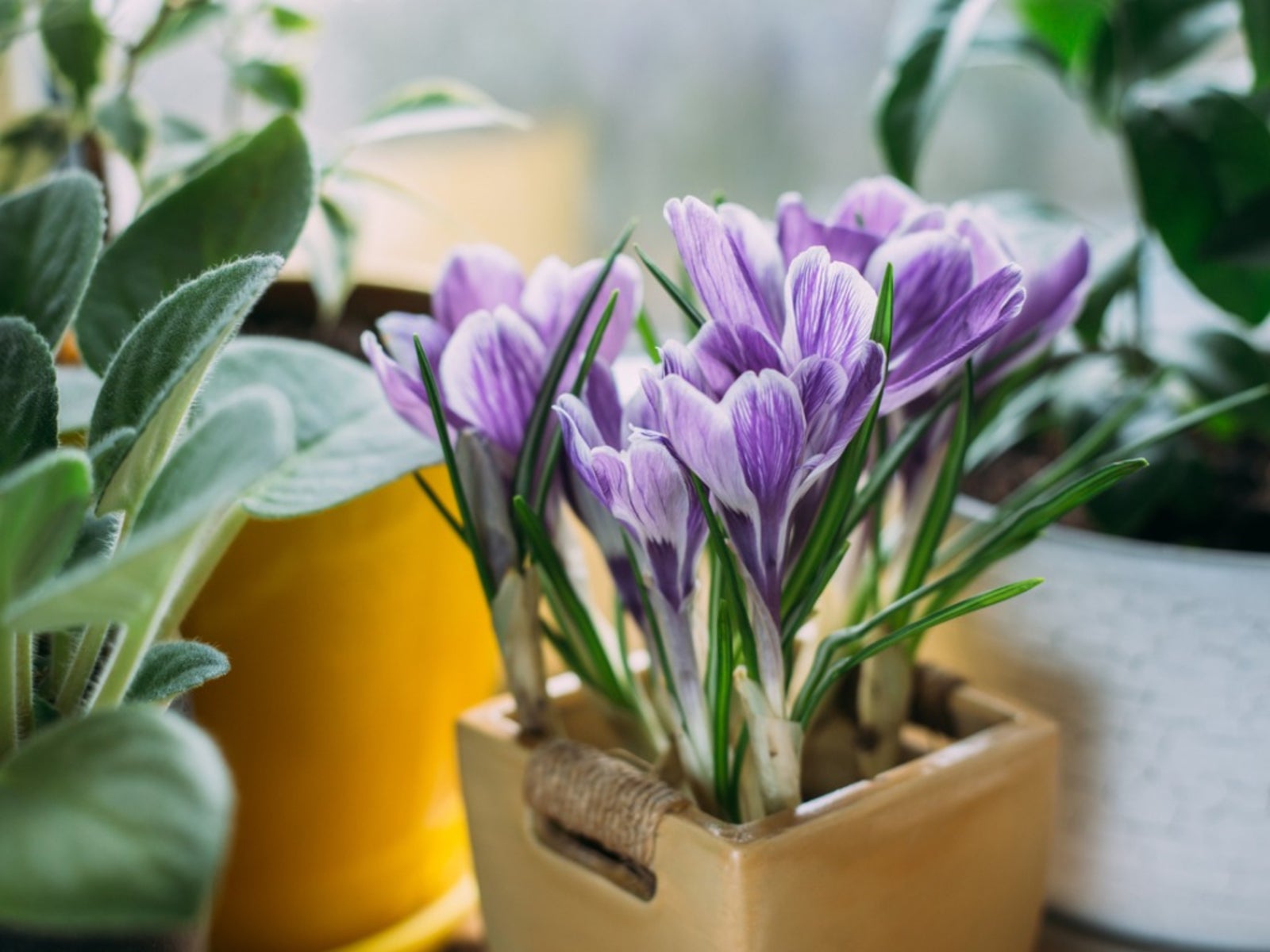Container Grown Saffron - Care Of Saffron Crocus Bulb In Containers

Saffron is an ancient spice that has been used as a flavor for food and also as a dye. The Moors introduced saffron to Spain, where it is commonly used to prepare Spanish national foods, including Arroz con Pollo and Paella. Saffron comes from the three stigmas of the fall blooming Crocus sativus plant. Although the plant is easy to grow, saffron is the most expensive of all spices. To obtain saffron, the stigmas must be handpicked, contributing to the preciousness of this spice. Crocus plants can be grown in the garden or you can put this crocus bulb in containers.
Growing Saffron Crocus Flowers in the Garden
Growing saffron outdoors requires soil that drains well and a sunny or partly sunny location. Plant the crocus bulbs about 3 inches (8 cm.) deep and 2 inches (5 cm.) apart. Crocus bulbs are small and have a slightly rounded top. Plant the bulbs with the pointed top facing upwards. Sometimes it's hard to tell which side is up. If this happens, just plant the bulb on its side; the root action will pull the plant upwards. Water the bulbs once planted and keep the soil moist. The plant will appear in early spring and produce leaves but no flowers. Once the hot weather hits, the leaves dry up and the plant becomes dormant until the fall. Then when cooler weather arrives, there is a new set of leaves and a beautiful lavender flower. This is when the saffron should be harvested. Do not remove the foliage right away, but wait until later in the season.
Container Grown Saffron
Potted saffron crocuses are a beautiful addition to any autumn garden. It's vital that you choose an appropriately sized container for the number of bulbs you wish to plant, and you should also fill the container with somewhat loamy soil. Crocuses will not do well if they are soggy. Place the containers where the plants will receive at least five hours of sunlight daily. Plant the bulbs 2 inches (5 cm.) deep and 2 inches (5 cm.) apart and keep the soil moist but not overly saturated. Do not remove the foliage right away after blooming, but wait until late in the season to cut the yellow leaves.
Sign up for the Gardening Know How newsletter today and receive a free copy of our e-book "How to Grow Delicious Tomatoes".